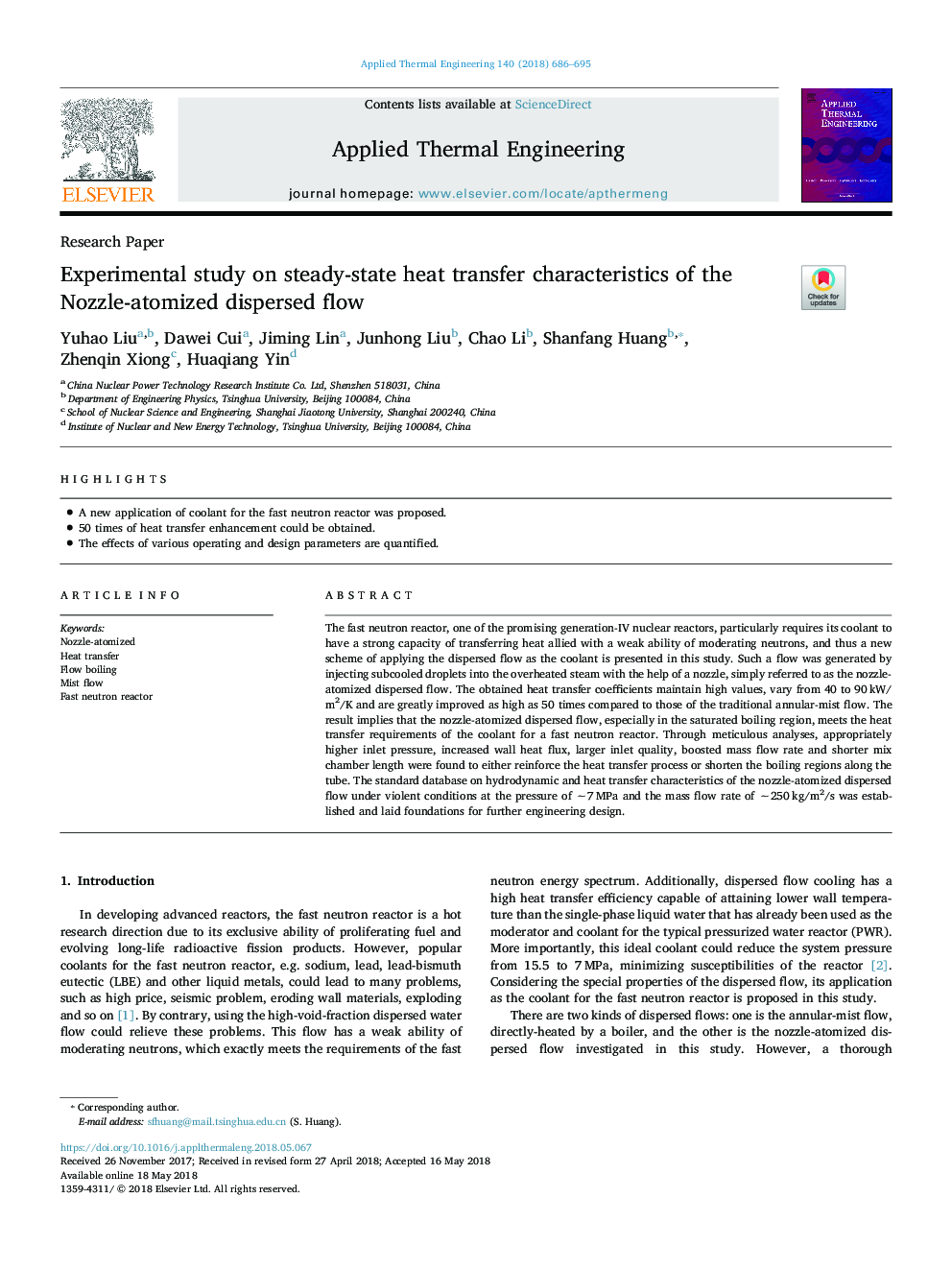| Article ID | Journal | Published Year | Pages | File Type |
|---|---|---|---|---|
| 7045163 | Applied Thermal Engineering | 2018 | 10 Pages |
Abstract
The fast neutron reactor, one of the promising generation-IV nuclear reactors, particularly requires its coolant to have a strong capacity of transferring heat allied with a weak ability of moderating neutrons, and thus a new scheme of applying the dispersed flow as the coolant is presented in this study. Such a flow was generated by injecting subcooled droplets into the overheated steam with the help of a nozzle, simply referred to as the nozzle-atomized dispersed flow. The obtained heat transfer coefficients maintain high values, vary from 40 to 90â¯kW/m2/K and are greatly improved as high as 50 times compared to those of the traditional annular-mist flow. The result implies that the nozzle-atomized dispersed flow, especially in the saturated boiling region, meets the heat transfer requirements of the coolant for a fast neutron reactor. Through meticulous analyses, appropriately higher inlet pressure, increased wall heat flux, larger inlet quality, boosted mass flow rate and shorter mix chamber length were found to either reinforce the heat transfer process or shorten the boiling regions along the tube. The standard database on hydrodynamic and heat transfer characteristics of the nozzle-atomized dispersed flow under violent conditions at the pressure of â¼7â¯MPa and the mass flow rate of â¼250â¯kg/m2/s was established and laid foundations for further engineering design.
Related Topics
Physical Sciences and Engineering
Chemical Engineering
Fluid Flow and Transfer Processes
Authors
Yuhao Liu, Dawei Cui, Jiming Lin, Junhong Liu, Chao Li, Shanfang Huang, Zhenqin Xiong, Huaqiang Yin,
